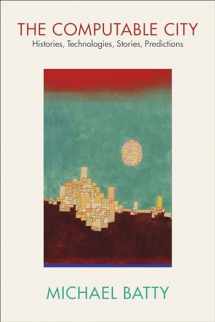
The Computable City: Histories, Technologies, Stories, Predictions
Book details
Summary
Description
How computers simulate cities and how they are also being embedded in cities, changing our behavior and the way in which cities evolve.
At every stage in the history of computers and communications, it is safe to say we have been unable to predict what happens next. When computers first appeared nearly seventy-five years ago, primitive computer models were used to help understand and plan cities, but as computers became faster, smaller, more powerful, and ever more ubiquitous, cities themselves began to embrace them. As a result, the smart city emerged. In The Computable City, Michael Batty investigates the circularity of this peculiar evolution- how computers and communications changed the very nature of our city models, which, in turn, are used to simulate systems composed of those same computers.
Batty first charts the origins of computers and examines how our computational urban models have developed and how they have been enriched by computer graphics. He then explores the sequence of digital revolutions and how they are converging, focusing on continual changes in new technologies, as well as the twenty-first-century surge in social media, platform economies, and the planning of the smart city. He concludes by revisiting the digital transformation as it continues to confound us, with the understanding that the city, now a high-frequency twenty-four-hour version of itself, changes our understanding of what is possible.


We would LOVE it if you could help us and other readers by reviewing the book
Book review



